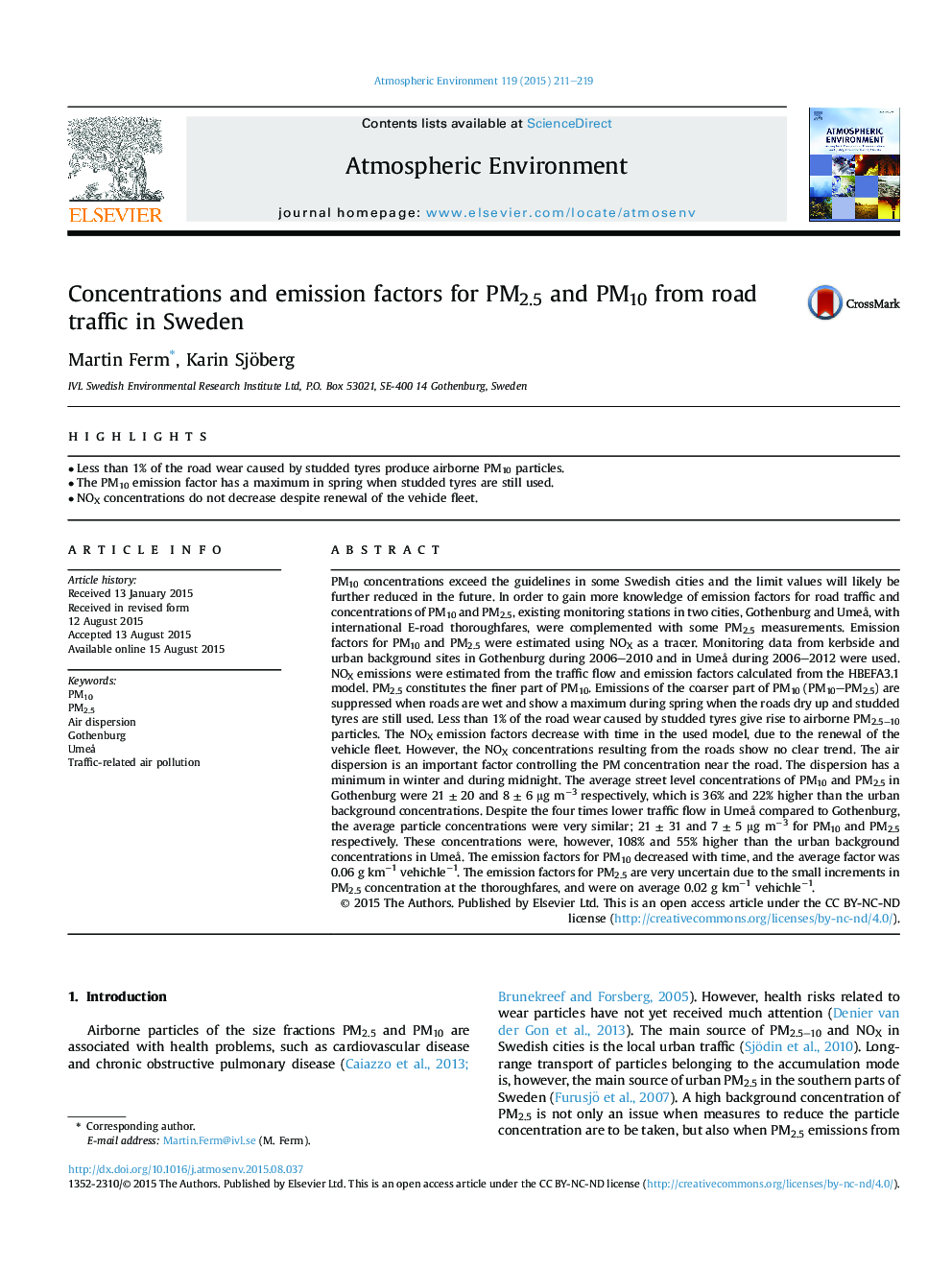| کد مقاله | کد نشریه | سال انتشار | مقاله انگلیسی | نسخه تمام متن |
|---|---|---|---|---|
| 6337642 | 1620352 | 2015 | 9 صفحه PDF | دانلود رایگان |
عنوان انگلیسی مقاله ISI
Concentrations and emission factors for PM2.5 and PM10 from road traffic in Sweden
دانلود مقاله + سفارش ترجمه
دانلود مقاله ISI انگلیسی
رایگان برای ایرانیان
کلمات کلیدی
موضوعات مرتبط
مهندسی و علوم پایه
علوم زمین و سیارات
علم هواشناسی
پیش نمایش صفحه اول مقاله

چکیده انگلیسی
PM10 concentrations exceed the guidelines in some Swedish cities and the limit values will likely be further reduced in the future. In order to gain more knowledge of emission factors for road traffic and concentrations of PM10 and PM2.5, existing monitoring stations in two cities, Gothenburg and UmeÃ¥, with international E-road thoroughfares, were complemented with some PM2.5 measurements. Emission factors for PM10 and PM2.5 were estimated using NOX as a tracer. Monitoring data from kerbside and urban background sites in Gothenburg during 2006-2010 and in UmeÃ¥ during 2006-2012 were used. NOX emissions were estimated from the traffic flow and emission factors calculated from the HBEFA3.1 model. PM2.5 constitutes the finer part of PM10. Emissions of the coarser part of PM10 (PM10-PM2.5) are suppressed when roads are wet and show a maximum during spring when the roads dry up and studded tyres are still used. Less than 1% of the road wear caused by studded tyres give rise to airborne PM2.5-10 particles. The NOX emission factors decrease with time in the used model, due to the renewal of the vehicle fleet. However, the NOX concentrations resulting from the roads show no clear trend. The air dispersion is an important factor controlling the PM concentration near the road. The dispersion has a minimum in winter and during midnight. The average street level concentrations of PM10 and PM2.5 in Gothenburg were 21 ± 20 and 8 ± 6 μg mâ3 respectively, which is 36% and 22% higher than the urban background concentrations. Despite the four times lower traffic flow in UmeÃ¥ compared to Gothenburg, the average particle concentrations were very similar; 21 ± 31 and 7 ± 5 μg mâ3 for PM10 and PM2.5 respectively. These concentrations were, however, 108% and 55% higher than the urban background concentrations in UmeÃ¥. The emission factors for PM10 decreased with time, and the average factor was 0.06 g kmâ1 vehichleâ1. The emission factors for PM2.5 are very uncertain due to the small increments in PM2.5 concentration at the thoroughfares, and were on average 0.02 g kmâ1 vehichleâ1.
ناشر
Database: Elsevier - ScienceDirect (ساینس دایرکت)
Journal: Atmospheric Environment - Volume 119, October 2015, Pages 211-219
Journal: Atmospheric Environment - Volume 119, October 2015, Pages 211-219
نویسندگان
Martin Ferm, Karin Sjöberg,